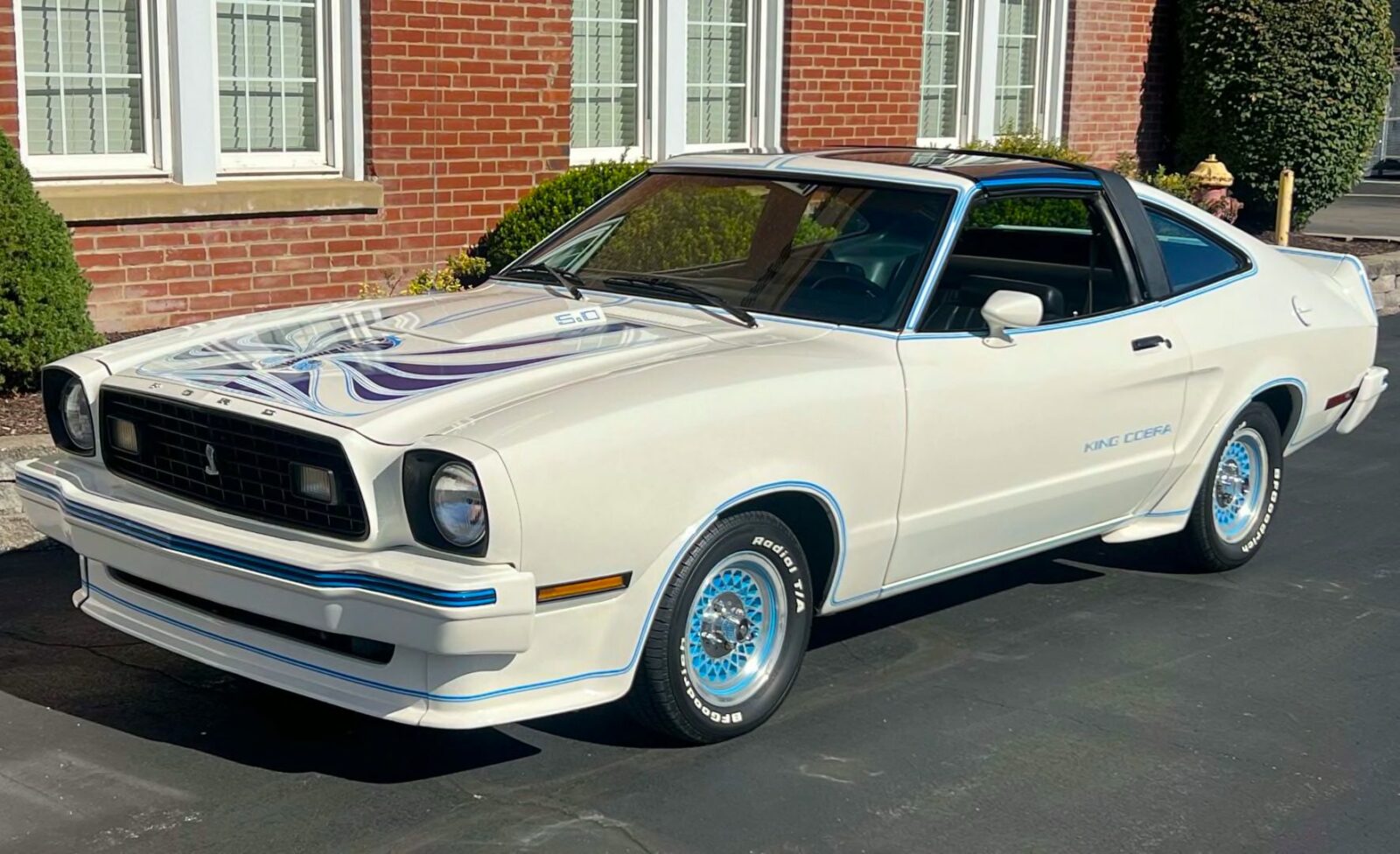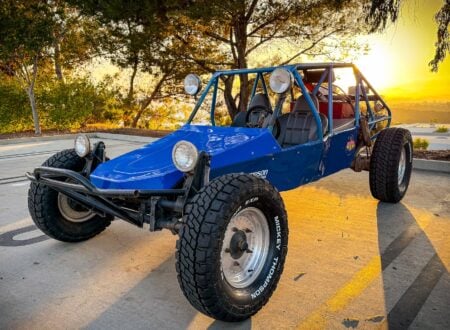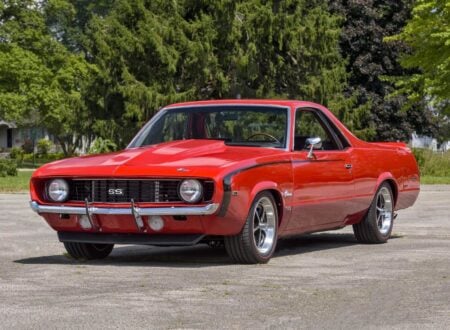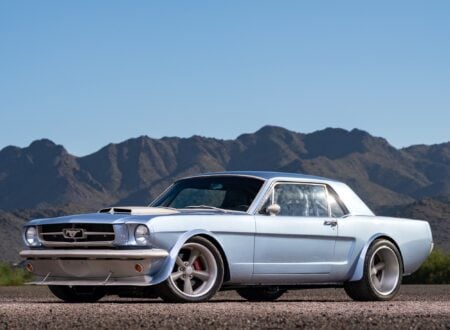This is an original 1978 Ford Mustang II King Cobra, a one-year-only model that was developed specifically (and not very subtly) to go after the wildly popular Pontiac Trans Am.
Much like the Trans Am, the Mustang II King Cobra had a T-top roof, a decorative body kit, high-performance parts fitted as standard, and perhaps most importantly, it had a giant decal of an angry cobra on the hood to match the Trans Am’s “screaming chicken.”
Fast Facts – The Ford Mustang II King Cobra
- The King Cobra was introduced in 1978 as the performance variant of the Mustang II, which was Ford’s response to the oil crisis and demand for smaller, more fuel-efficient vehicles. The Mustang II itself debuted in 1974 and was a radical departure from the larger, more powerful Mustangs of the late 1960s and early 1970s.
- While the King Cobra boasted various visual upgrades suggesting a high-performance vehicle, its engine was not significantly more powerful than the other Mustang II variants. The primary engine option was a 302 cubic inch (5.0 L) V8 producing just 139 bhp due to emissions equipment that strangled the performance.
- 1978 marked the last year of the Mustang II before Ford transitioned to the third-generation Mustang in 1979. The new model, built on the Fox Body platform, aimed to recapture more of the performance image lost during the Mustang II years, and it set the stage for the Mustang’s future evolution into the Mustang we all know today.
- The car you see in this article is an original 1978 Ford Mustang II King Cobra, it came with power steering, power brakes, an AM/FM radio, bucket seats and a console. It’s powered by the 302 V8, as they all are, and power is sent to the rear wheels via an automatic transmission.
In Defense Of The Ford Mustang II
The Ford Mustang II was released with much fanfare in 1973 as the hotly anticipated replacement for the outgoing first-generation Mustang. There’s no arguing that the Mustang II had big shoes to fill. The original Mustang was then (and remains today) one of the most beloved American sports cars of all time, whereas the Mustang II was being released into a new world of heavy emissions restrictions, a raft of new crash safety laws, and more stringent fuel economy demands.
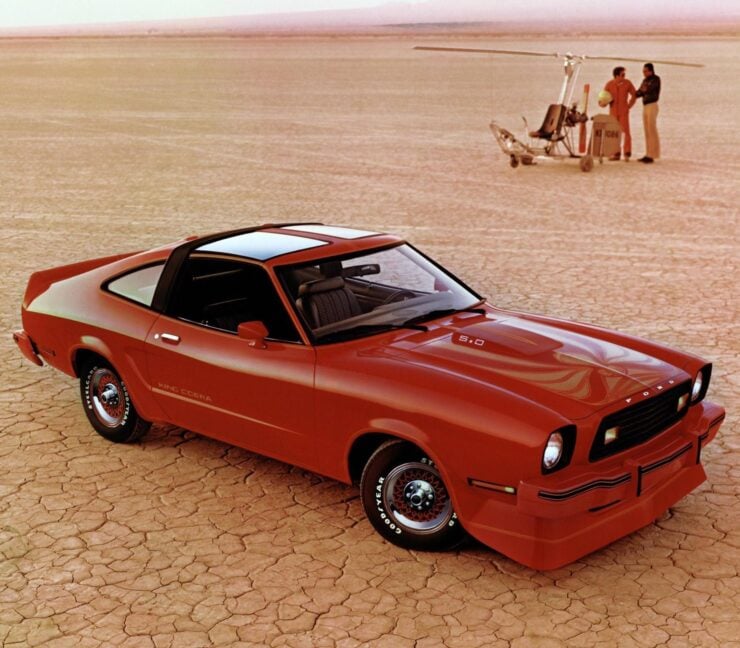

Things started out well for the Mustang II, it was named Motor Trend’s 1974 Car of the Year and it enjoyed strong sales largely as a result of the 1973 Oil Crisis and other related factors pushing consumers towards smaller, more fuel efficient cars.
In some respects, the Mustang II was to the Mustang what the Bronco II was to the Bronco. It was never intended to be a full-sized, red blooded, full fat replacement for its forebear but more of a slimmed down version that wouldn’t break the bank when you pulled up at the fuel bowser.
The Mustang II was developed under Lee Iacocca as an “entirely new kind of pony car.” It was almost 500 lbs lighter than the Mustang it was replacing, as well as 19 inches shorter, and it was based on the subcompact Pinto platform.
It was offered in both two door coupe and three-door hatchback configurations, with engines ranging from the 2.3 liter Lima inline four to the 2.8 liter Cologne V6 up to the 4.9 liter Windsor V8. Buyers could opt for either a 4-speed manual or a 3-speed automatic transmission, and suspension was independent up front with a live axle in the rear.
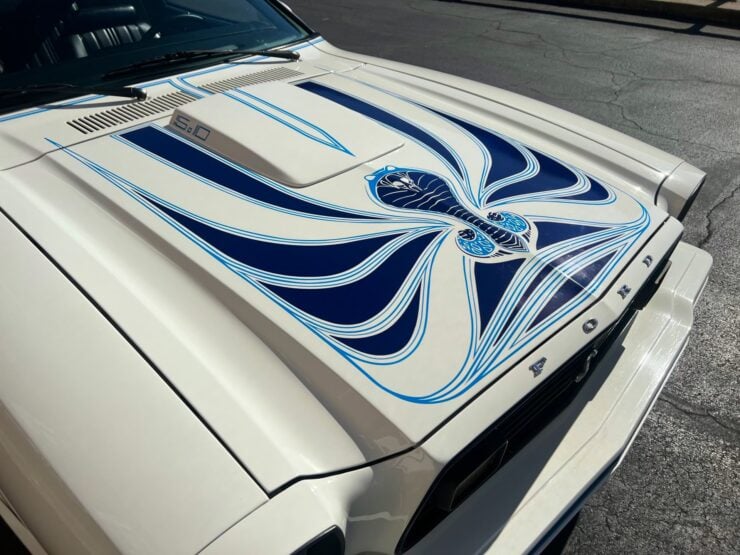

Performance wasn’t the strong suit of the Mustang II, the top-of-the-line 302 V8 was producing just 139 bhp due to an undersized two-barrel carburetor and additional emissions equipment. This resulted in a 60 mph time of 10.5 seconds and a top speed of 106 mph, not impressive by any measure and certainly plenty slower than the V8 Mustangs of a decade earlier.
Although many point to the Mustang II as a failure, and add it every lowlights reel of the Malaise Era, the car itself actually managed 1.1 million sales over its four years of production and helped Ford navigate what was the most difficult time in history for US automakers since the Great Depression.
That said, the automotive enthusiast community exhaled a sigh of relief when the new Fox Body Mustang was released in 1978, with improved styling and engine options that would continue to get more powerful as the 1980s progressed.
Ford’s Answer To The Trans Am
The 1978 Ford Mustang II King Cobra would be the last hurrah for the Mustang II, 1978 was a the final year of production, and Ford wanted the model to go out with a bang – so what better way than to create their very own “Trans Am killer.”
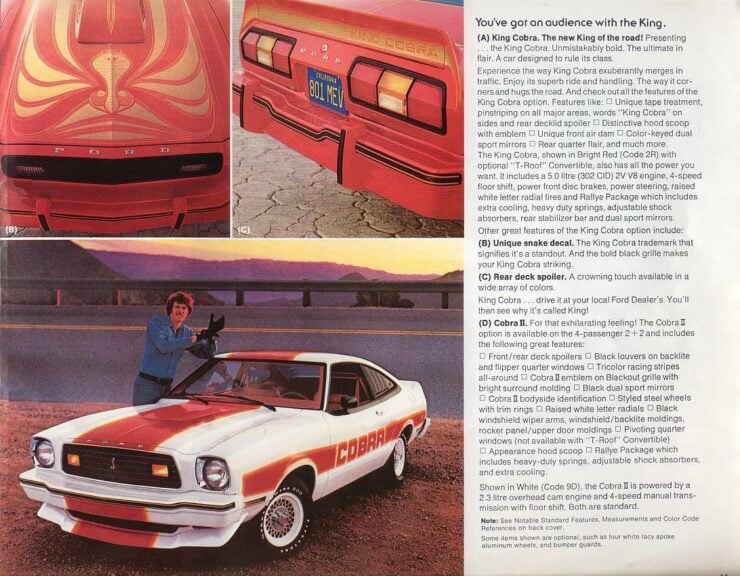

They took the standard 302 V8 version of the Mustang II and added a front air-dam, a rear spoiler, fender flares over each wheel, a hood scoop with a 5.0 decal on each side, pinstriping, King Cobra decals, and a prominent Cobra hood decal – a reference to the Trans-Am’s “screaming chicken.”
Only the 302 V8 was available for the King Cobra but buyers could opt to mate it with either the 4-speed manual or 3-speed automatic transmission, most chose the auto. The King Cobra could be ordered in Red, Silver, Black, Brown, Blue, or White and the package included the Rallye handling package which consisted of of heavy-duty springs, adjustable shock absorbers, and rear sway bar.
Ford plan was to sell just 4,313 units of the special option package, which cost an additional $1,277 USD. The exact number made is in dispute, however it was somewhere between 4,313 and 4,971. Today the cars are still relatively affordable despite their rarity, a result of the fact that they exist in the shadow of the Malaise Era, but maybe not for long as interest in this time period continues to climb.
The 1978 Ford Mustang II King Cobra is due to roll across the auction block with Mecum in Dallas later in September. It’s being offered with no reserve and it comes with a deluxe Marti Report verifying its heritage and originality, the price guide is $20,000 – $30,000 USD. If you’d like to read more about it or register to bid you can visit the listing here.
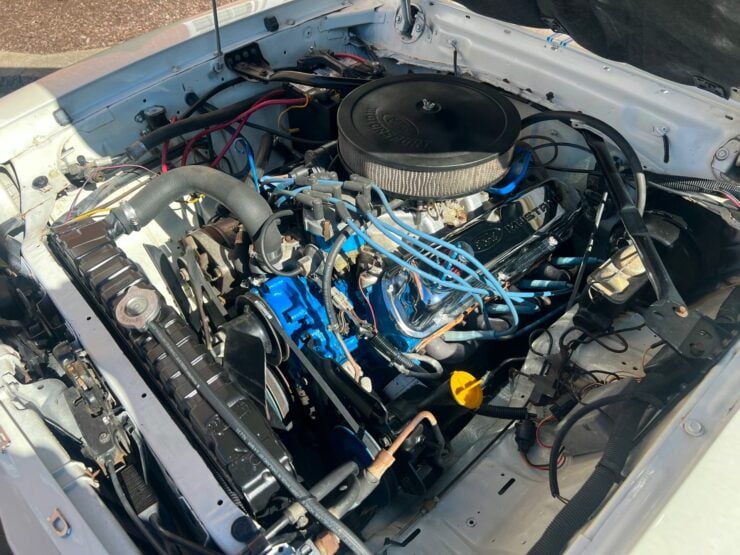
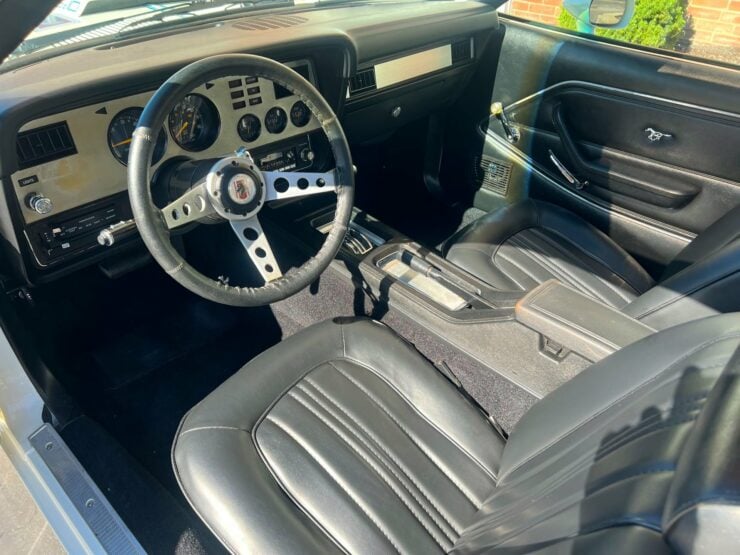
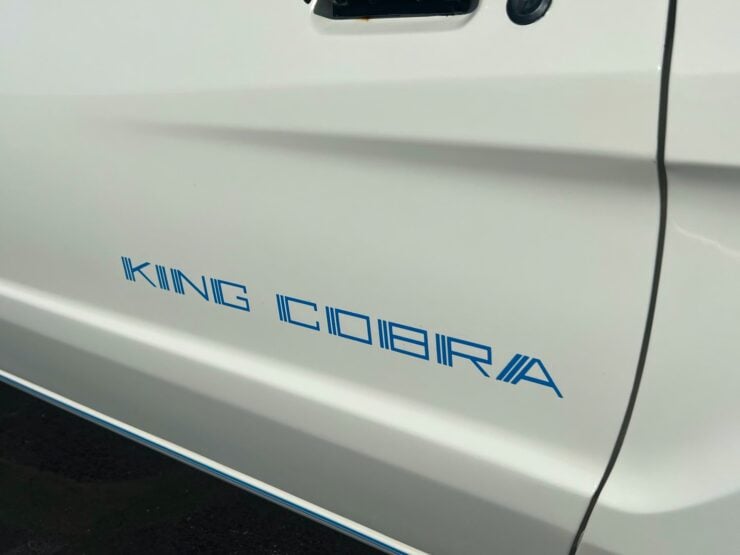
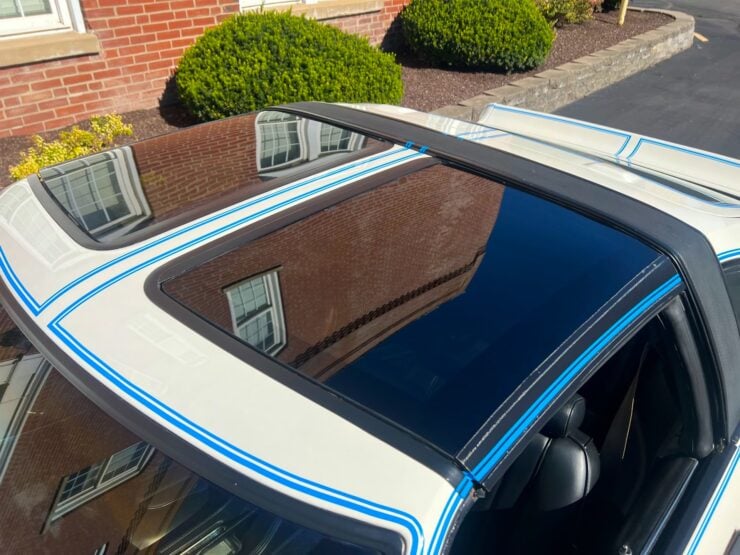
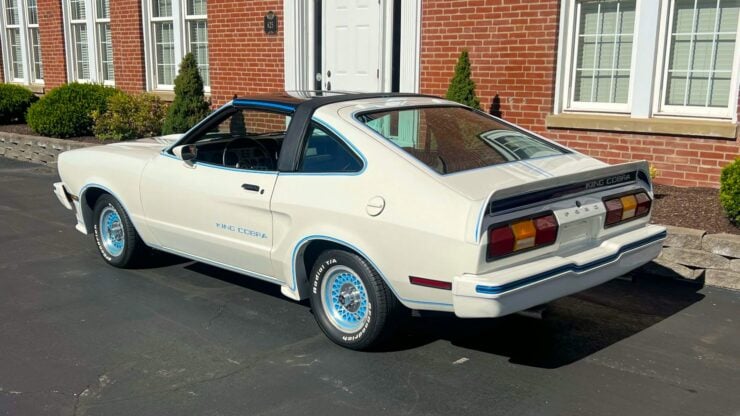
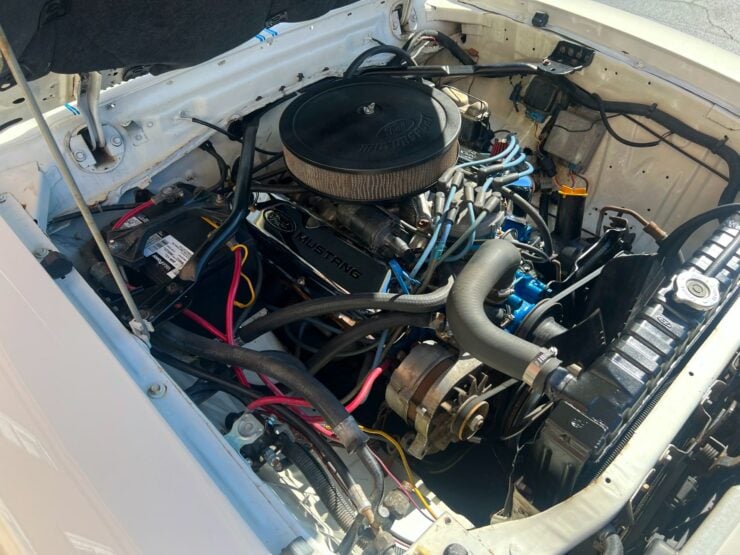
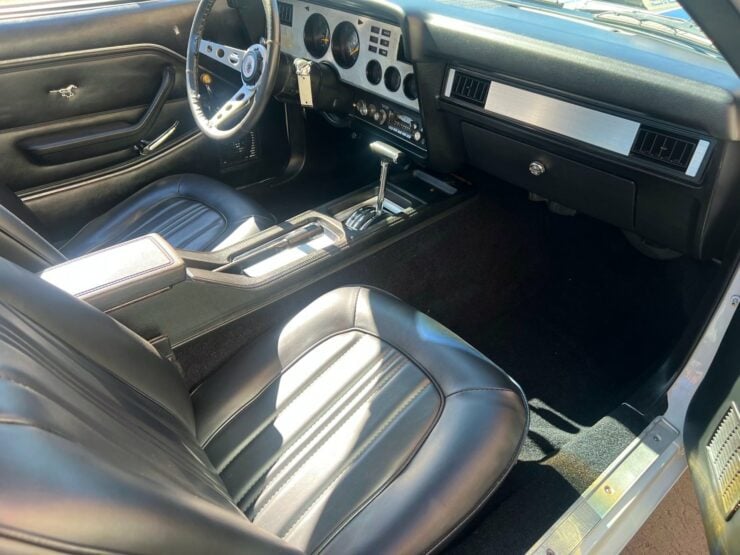
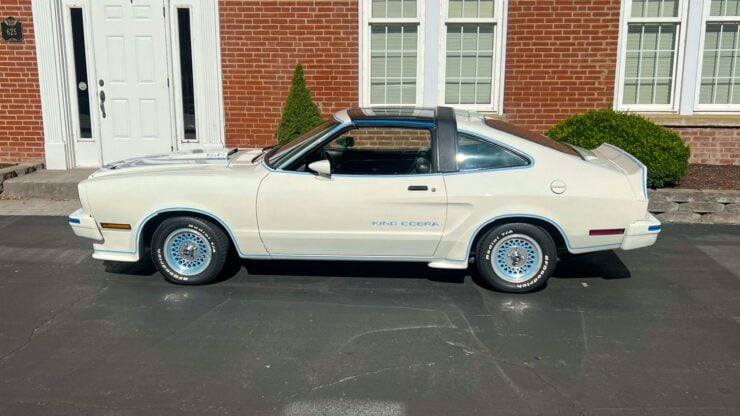
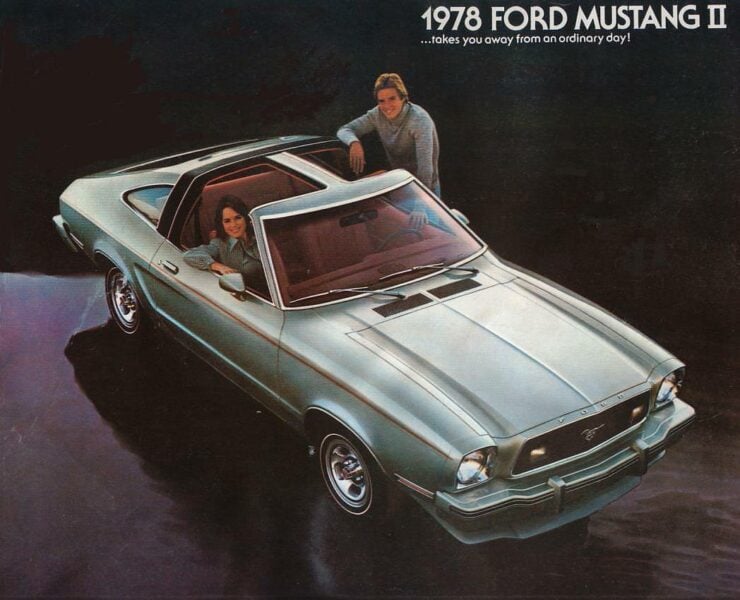
Images courtesy of Mecum

